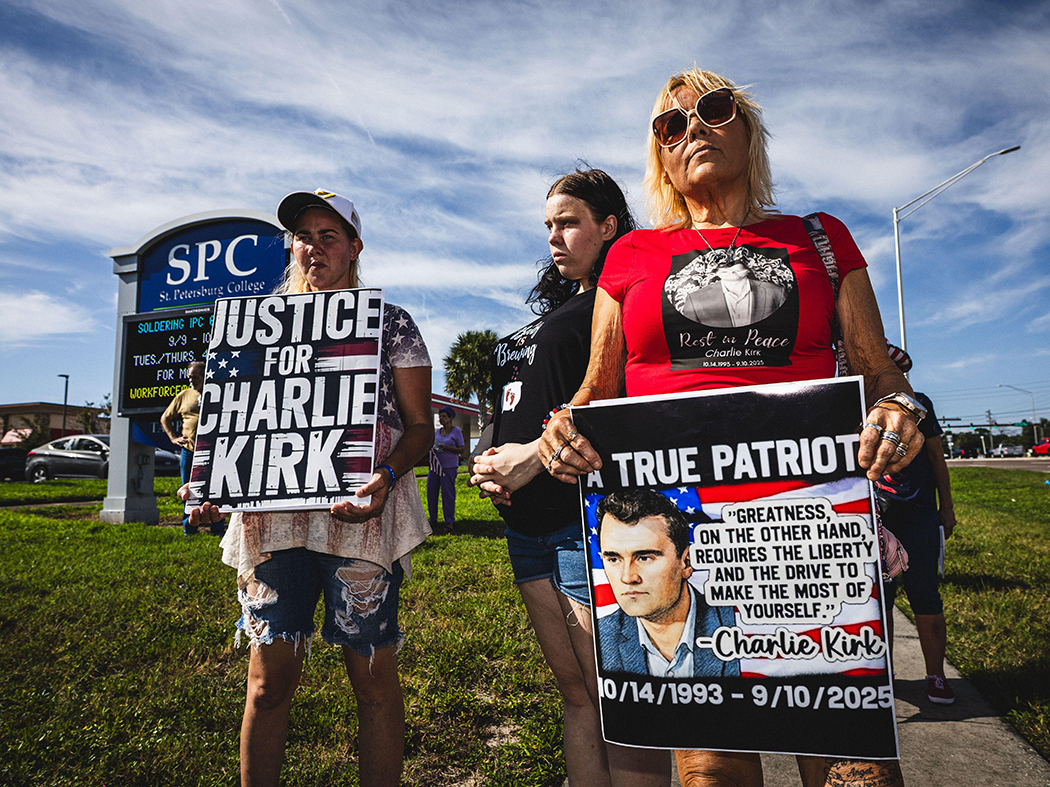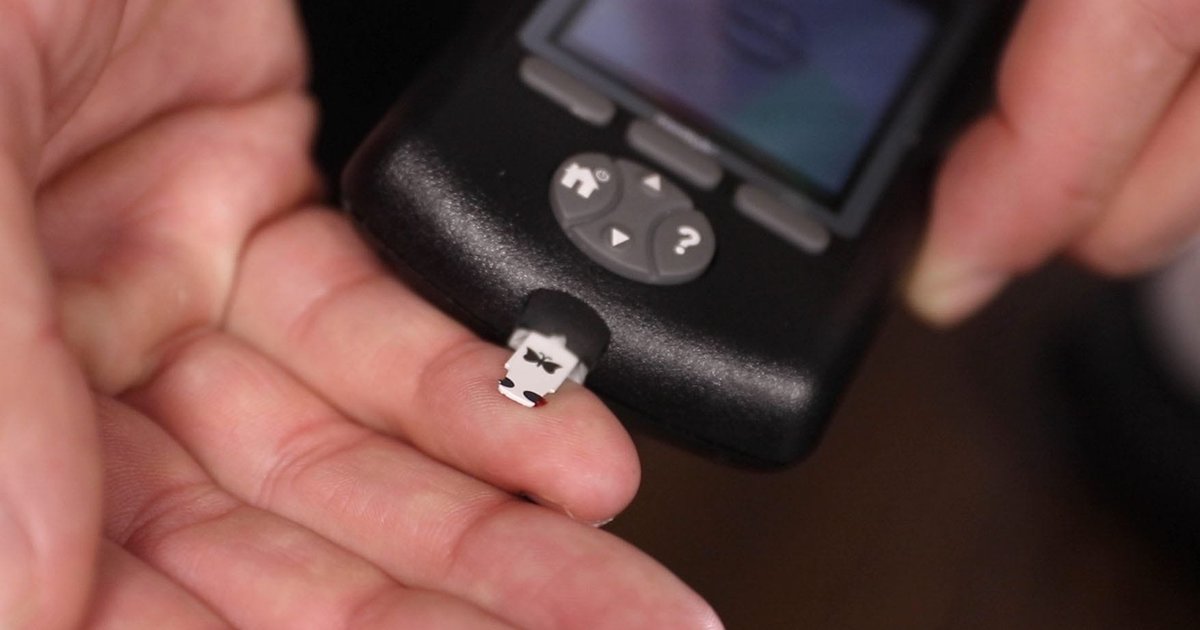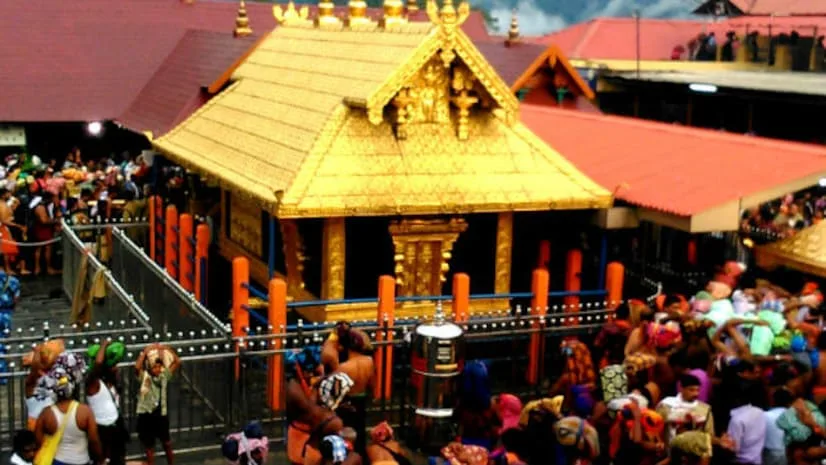By Freddie Hayward
Copyright newstatesman

“It’s really comforting to be around so many good, faithful, God-fearing people,” Karoline Leavitt, the White House press secretary, told the thousands gathered for a prayer vigil at the Kennedy Center in Washington DC, on 14 September.
It was four days since Charlie Kirk’s assassination at Utah Valley University. The Maga movement was mourning his death with a convulsive anger and Kirk was on his way to becoming a secular saint. The assassination has laid bare America as a country soaked in religion and violence.
The vigil began with Christian acoustic rock and the pledge of allegiance. The bald, muscular man beside me let out shouts of, “Yes, God” and “amen” as he held his palms to the ceiling. TheHousespeaker, Mike Johnson – a short man with a cartoonishly young face – led the hall in prayer and said the “ground has shifted beneath us”.
He was right. Do not underestimate the adoration conservatives felt for this 31-year-old activist. Kirk was the William F Buckley of his generation. He did not have Buckley’s patrician flair, but they were both media juggernauts who were much closer to the government than their readers or viewers thought. Kirk was friends with Donald Trump and JD Vance. His organisation, Turning Point USA, was a factory for future Republican leaders. Kirk was a mentor to Leavitt when she ran for Congress in 2022. He lobbied Trump on top appointments and pushed for Vance to be his running mate. At the Kennedy Center, RFK Jr credited Kirk with facilitating the alliance between himself and Trump.
Kirk inspired parasocial loyalty from millions of people who had not met him but felt they knew him because they had spent so many years watching him online. He was also a de facto member of the administration. He was much more influential than nearly all of Trump’s cabinet. Hence, his death is being marked with a level of ceremony akin to a state funeral. Soon after Kirk’s assassination, Trump ordered all federal flags to be lowered to half-mast. Vance travelled to Utah to carry the casket on to Air Force Two, before flying with Kirk’s body to his home state, Arizona.
The nation’s pre-eminent public theatre house was set aside for the vigil. In many ways, the Kennedy Center has become the Trump Theatre. The president has had himself elected as the establishment’s chairman and has pushed for more musicals such as Cats. (The same night as the vigil, children posed in front of posters for a production of The Sound of Music.) It is part of Trump’s attempt to gain control over the culture alongside politics; the Center will host key celebrations for America’s 250th anniversary next year.
At the vigil for Kirk, thousands waited in long, snaking lines to pay their respects. When Robert F Kennedy was shot in 1968, there was a sense that he was the greatest president the country would never have. In the queues in Washington, Republicans – mostly young men and women in formal wear – spoke about Kirk in the same reverential way. Military police armed with handguns watched over the lines. It was unclear whether a protester across the road with a megaphone was shouting that Trump is a “rapist” or a “racist”. “Imagine having such rage in your soul?” one man lamented.
To these people, Kirk was a free-speech martyr. His day job was to debate progressive students on campuses around the country. The symbolism of a bullet piercing his throat as he tried to persuade an opponent with words has pushed some on the right to come out to say free speech is a luxury that can no longer be extended to the left. Michael Knowles, an influential conservative commentator, said that “in the wake of Charlie’s assassination, many people are demanding that we redouble our devotion to the ‘free marketplace of ideas’. We had an open marketplace of ideas; the left shot it up… What we require now is the reassertion of order.”
This shift towards a vengeful politics of power is partly motivated by the visceral horror of Kirk’s death. The Zapruder tape of JFK’s head exploding in Dallas was grainy and unavailable for years after the killing. But here was a video of Kirk’s neck pouring blood, splashed on to screens around the world within a few minutes.
In an essay from 1970, Richard Hofstadter wrote: “Today we are not only aware of our own violence; we are frightened by it.” The clip of Kirk’s murder may now frighten the Maga movement into pursuing a reactionary campaign against the left writ large. It is not hard to imagine Trump, who has already survived two assassination attempts, thinking his own safety depends on suppressing the left en masse. There is a genuine fear in Washington today – something the omnipresent National Guard, the military police in the bushes, does little to abate.
The administration is already purging those who celebrate Kirk’s death or merely criticise his views. The secretary of war, Pete Hegseth, has called for soldiers to be fired if they celebrated the murder. The State Department is rescinding visas on the same basis. Steve Bannon has said that Kirk is a “war casualty” and that law enforcement should begin seizing phone records from “them” in order to “avoid a civil war”. “We will not accept unity,” he said on his television show, slamming the table. “We will only accept victory.” Trump’s deputy chief of staff Stephen Miller has spoken about a “domestic terrorist network in this country”, adding: “You want us to live in fear. We will not live in fear, but you will live in exile.” Laura Loomer, an activist close to the president, said she now wanted “Trump to be the ‘dictator’ the left thinks he is”.
Maga has needed to find an enemy other than the deep state since taking the reins of government in January. Its nemesis is no longer an institution protecting the liberal elite, but wayward degenerate citizens who – as they see it– are possessed by the devil. “This is a battle between good and evil. I wish we could compromise, but you can’t compromise with evil,” as Kari Lake, the perennial Maga candidate, told the Kennedy Center.
This vague attack on “the left” recalls the war on terror, in which the enemy was an idea, not an army. In the wake of 9/11, an abstract enemy provided the justification for the expansion of American executive power through, for instance, the 2001 Patriot Act. Now, the White House is trying to use Kirk’s assassination as a pretext to wage a similar war against an equally amorphous enemy.
The Maga movement sees the left as demonic, decadent and mentally ill. But the life of Kirk’s assassin contains more nihilism than rage. A bright 22-year-old, Tyler Robinson spent his life playing video games online. The etchings he allegedly left on the bullet casings are a melange of ironic online gaming memes.
Robinson does not seem to want his actions to mean more than a sardonic aside. When one of his friends sent the photo of the suspect to their group chat, Robinson joked that his “doppelganger” was trying to “get me in trouble”. Someone else posted: “Whatever you do, don’t go to a McDonald’s anytime soon” – a reference to Luigi Mangione, who was caught in one after killing a healthcare executive in December. This is smug nihilism delivered in an ironic pose, devoid of feeling and compassion; a sick-minded descent into empty cynicism.
Note that the bullet had only just torn into Kirk’s neck when a young man in the crowd whipped out his phone to start filming. “It’s yo’ boy, ElderTikTok,” he said grinning at the camera as students fled around him. “Shots fired! Shots fired!” he said. “I’m not playing with y’all.” Before ending the video, he told his viewers to “make sure you subscribe”. Another man seemed to start stealing Kirk’s merchandise before the police chased him away.
When committed with such nihilism, political violence risks becoming banal to Americans. The crack of a bullet is just another feature of the coarse atmosphere in which politics takes place. In his 1970 essay, RichardHofstadter wrote that the reason Americans are so quick to forget their long history of violence is that they are certain their political system will endure. This is what he calls the “confidence that almost any kind of mess could be brought under control quickly enough if one suddenly had to extend oneself, and that if a few people died in the meantime, that was just the way of the world”.
But that optimism rests on Americans agreeing on the core pillars of political life – the validity of elections, for instance. There is no longer a shared reality around which Americans can debate politics. It’s hard not to see a country of atomised individuals drifting between contrived and shallow online communities.
Donald Trump is expected to attend Kirk’s funeral in Glendale, Arizona, on 21 September. The event might be forcing a semblance of decorum on the White House. But afterwards we will find out whether the paranoia Kirk’s slaying has provoked in Trump himself and his lieutenants will accelerate America’s descent into authoritarianism.
One of Maga’s most beloved figures has become a martyr. When JD Vance presented Kirk’s YouTube and radio show on 15 September, he made a call for national disunity. He told his fellow US citizens, quoting Paul in Ephesians, to “put on the full armour of God” and to snitch on those who were seen to be celebrating Kirk’s death to their employers.
The assassination has shown that people in this wealthy, powerful country are riddled with a nihilistic desperation and fear. The rise in political violence in America suggests a buoyant fringe sees democracy as impotent, aimless and pathetic in comparison to the brutal efficacy of a bullet to the throat.
There have been few speeches since Charlie Kirk’s killing that claim this is not America. Instead, there seems to be an anxious acceptance that in fact, it is.



